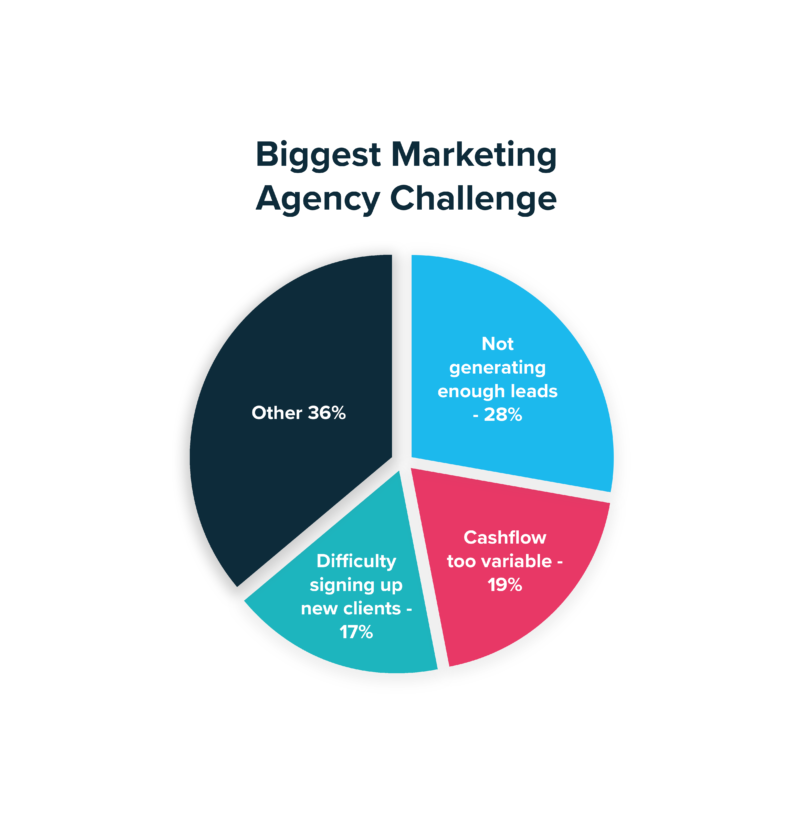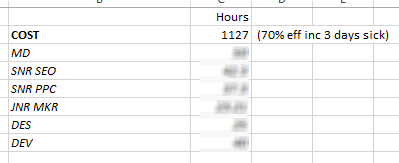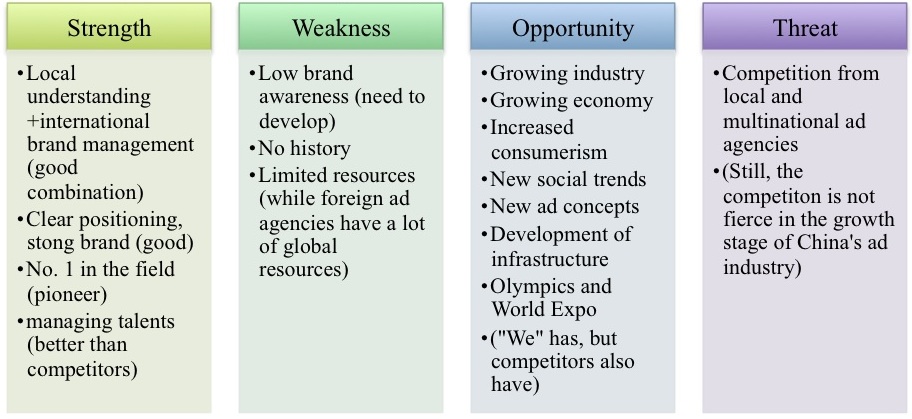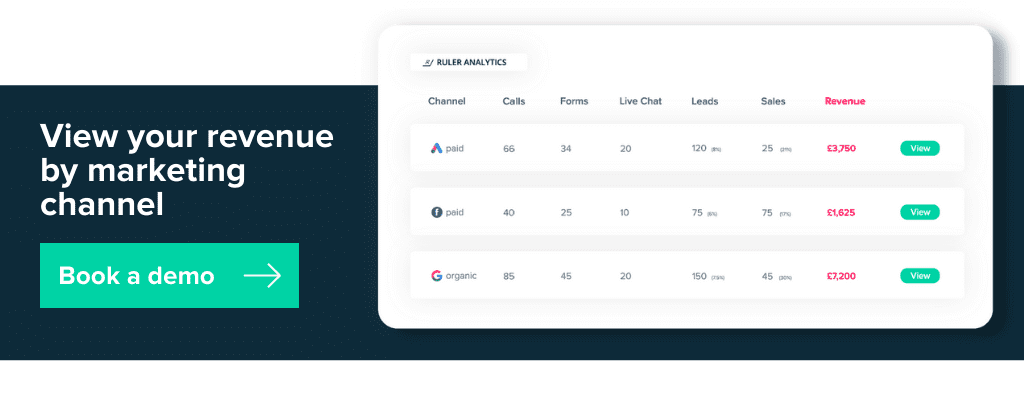Do you often wonder how you can start scaling your agency in 2022? As a marketing attribution tool, we work with a lot of agency professionals who often ask themselves the same question.
With that said, we thought it would be a good idea to approach some of our agency clients, from a variety of backgrounds and ask them the following question:
“What do you consider is your biggest pressure growing your agency, and what methods have you put in place to reduce/avoid it?”
We collated answers from small, mid to large-sized agencies. From there, we began to understand the common pressures that agency owners face when it comes to scaling an agency, and the end result? Hopefully by the end of this article, some of what our agency experts have had to say will resonate and you can take onboard some of their methods.
Topics we’ll discuss:
💡 Pro Tip
While many of us do frequently report on our marketing performance, there’s a bit of uncertainty on what we should (or shouldn’t) include in our digital marketing reports. With our guide on marketing measurement, you’ll learn everything there is to know about building high-powered digital marketing reports for your clients.
Download a complete guide to measuring your marketing
One of the main concerns for agency owners is cash flow and concerns around having enough revenue to cover operational costs. Is this a surprising revelation? Not at all.

A previous survey by Hubspot revealed that two-thirds of agency owners consider unpredictable cash flow one of their top three challenges, and 19% of them called it their top concern.
Mitchel White and Dan Cullen-Shute, CEO and Founder at Creature of London
“There are a million pressures that come from running an agency. The pressure to make every piece of work something you’d be as proud of in Effectiveness Week as you would in Cannes; the pressure to ensure we don’t run out of Crunchy Nut Cornflakes on a Monday morning; and the pressure to make sure you’re both funny AND insightful when asked to supply a quote for somebody else’s article. Sitting atop ALL of that, though is the pressure to keep everybody’s mortgages paid.
Darren Marble, CEO of CrowdfundX
“My biggest pressure is ensuring that they generate enough revenue to cover salaries and overheads on a monthly basis.
Whatever size your agency is or how fast it’s growing, there’s always going to be that uncertainty of cash-flow. Sadly, we can’t see into the future and predict when we’re going to get hit by unexpected costs or experience one of those ‘bad months”.
Jordan Scheltgen, Founder of Cave Social
“Agencies can be quick to tell their clients to spend big on search engine marketing and social media marketing, but then don’t utilise those channels themselves.
You need to figure out what it costs you to get a client, then put an estimated LTV (Lifetime Value) on that client. This metric is the key to financial growth”.
Also known as Customer Lifetime Value (CLV) or Lifetime Customer Value (LCV) – depending on your preference. LTV is a method used by marketers to project the revenue a customer will generate during their lifetime.

Jordan continued: “LTV can determine the financial gain of your business and is a valuable metric for those running an agency or subscription-based model.”
And remember, you can understand every lead from a revenue perspective too.
With tools like Ruler, you can track every inbound call, form or live chat with a quick bit of code. Ruler will share leads to your CRM, and then update your analytics software with revenue data once they’ve converted into a sale.
💡 Pro Tip
Ruler makes the process of tracking your lead values much easier. It tracks data on a visitor level, allowing you to successfully attribute leads and marketing-generated revenue across multiple campaigns, ads, keywords and more.
How Ruler helps you track and forecast revenue
Jordan Scheltgen, Founder of Cave Social
“The worry for agency owners is having enough month at the end of your money. My main advice is to switch to a retainer pricing model as soon as possible – if you haven’t already.
To understand cost on a retainer base, project your hours internally, then put forward a price monthly with your deliverables. By implementing a retainer-based model, you have a predictable source of regular income and clear mechanisms for operational costs.
More importantly, you have a clear roadmap for future production and can budget your team’s time accordingly.”
Ed Leake, Founder of Midas Media
“Using a retainer model has enabled our team to factor our average billable working hours and overhead per role, giving us a baseline cost.
It’s really simple, anyone with a copy of Excel can do it. I use total working hours – holidays – 3 days sick * 70% efficiency, per person.”
Leake shares with us a quick example of what this process looks like:

“I account for a person’s wage, the business cost (office, equipment, software tools etc) and any advertising budget. Then, I add in projected hours per service, which gives me a no-nonsense baseline. The spreadsheet then calculates a 20% creep/slack with a 35% profit margin.
The end result, an accurate price for the service.”
Here’s an example:

“This process (in tandem with tight project management) has enabled him to propose retainers to the nearest hour billable. Often our prices look ‘funny’ because of this, we don’t round up or down to get a job – we give exact figures without discount. But this works in our favour. It offers immediate trust and transparency”.
Ed Leake, Founder of Midas Media
“The best way to manage your finances is to be tight and watch every penny – even when you’re making money. This isn’t just in the first few years; you need to do it forever. Remember, some of the richest people in the world become rich because they keep an eye on their expenses like a hawk.”
Mike Ramsey, President of Nifty Marketing
“For me personally, I follow Dave Ramsey’s personal financial guidelines for my business and I find it very conservative. The guidelines outline having 3-6 months of expenses on hand at all times.
For example: at £65,000 per month of expenses, you should have between £195,000-£390,000 in reserve.
Of course, this can seem like a lot of money in reserve. But, if clients unexpectedly drop, or major industry changes necessitate a completely new model, you will have the cash on hand to make good decisions – instead of desperate ones.
So now, we’re growing, but not at a crazy rate. But, if we lose a client, it’s ok. If we have late payments, that is also ok. I can sleep given I know we have months of float with zero income if needed. Greed can build things fast, but can also bring everything down just as quickly. I would rather take my time and play the long game.”
Seb Dean, Managing Director of Imaginaire Digital
“While planning for overflow is great, you also need to focus on building a solid process for getting new business.
I like to plan out my sales process. Asking yourself these questions will help you to develop your own process:
Once you have answers to these questions, you’ll be able to attract new business.”
Oliver Gaywood, Founder of Civic Web Media
“I always make sure to use the networks I have to develop my customer acquisition. That was people I’d worked with previously, as well as my friends. Referral is the best way to grow business.
Some people wanted help with their content, some referred me to those they knew who needed it and others, even though they didn’t really know what content marketing was, associated the term with us and would mention us in relevant conversations.”
Josh Ballard, Founder of Paradox Marketing
“While using your own networks is one way to grow your business, you can accelerate that process by getting out and networking as hard as you can in your own hometown.
As you meet new people in person make sure that you have a follow-up plan for engaging with them online. Always be adding value and never be sold. You will win more work in the long run by sending through meticulously well-curated content to your prospects than you will by pointing out how their digital presence is not working well.
As well as this, you should also build a solid process for your existing accounts too.”
Another major concern for agency owners is the challenge of recruiting the right talent for their business. According to a report by Hubspot, hiring top talent was the eighth biggest challenge marketers faced in 2017.
In the past couple of years, there has been a significant shift from outbound to inbound marketing.
In addition to this, the required skills of a modern marketer are very different from what they were a decade ago. Nowadays, roles seem to have overlapped and morphed.
For example, marketers are needed to oversee marketing activities as well as assist sales to generate new business and drive growth within existing accounts.
Ed Leake, Founder of Midas Media
“Talent shortages seem to be a common issue throughout many industries. Although, it is a significant challenge for those who work in the digital and tech sector. But, for agencies, talented people are your lifeblood when it comes to growth.”
Jane Asscher, CEO at 23red
“We are looking for people to grab opportunities to learn, develop and share new concepts. We provide our existing employees with a cultural allowance which they can spend on theatre, museum galleries and other events. The aim of this is to help encourage employees to flourish and expand their cultural know-how.
This focus on their culture and values has helped us attract and retain talent ensuring that they have one of the lowest levels of staff turnover in the industry.”
Nick Stuart-Miller, Founder of Seed
“We have made sure every person at Seed feels like they are an important part of our company, and giving them responsibility, accountability and the voice to be heard.
We also make sure that our leadership team is open to the team at all times. This intrinsic openness means that individual challenges are supported. Communication is key to success. Make time for your employees, and give them the responsibility they’ve worked so hard for.”
Kyle Racki, Founder of Proposify
“The biggest pressure growing an agency is handing over the reins to other people. As an agency owner, you started as a freelancer where you managed everything: the clients, the projects, the invoicing, the new business”, he says.
Jess Butcher, Co-Founder and CEO at Blippar
“You need to ensure that you’re hiring good ‘managers’ and not just good doers – people potentially better than you at their areas of expertise who you can empower to hire, manage and develop their teams and really ‘own’ their areas of the business. You simply cannot scale if you continue to have direct input in everything that the business is doing.”
Jamie Huskisson, Founder at JH
“One of the most important things when growing an agency, is to give people the power they deserve and provide them with the autonomy, when they can deal with it, to really flourish.
Identify your leaders early and give them the opportunity to shine as early as you can. If you’re feeling the pressure of handing over the reins still, start by raising your team’s autonomy slowly. This way, you will be assured that you’re not giving away too much control at once, avoiding any potential backtracking in the future.
By providing autonomy you’ll grow quicker because you have more people tackling different tasks at once and you ‘move as one’ as a leadership team internally”
Maintaining the standards of your business as you scale is always going to be an uphill challenge. No matter where you are in the development of your agency.
The following are just a few practices, recommended by our agency owners, which you can take on board to avoid that dreaded pressure of maintaining standards.
Andy Golpys, Co-founder at MadeByShape
“My vision was to operate a small studio, with a team of around twelve. As an agency grows, there become more difficulties such as, increased volume of projects, tighter deadlines, more staff to manage, more people to deal with, and a lot more travelling which takes up time.
We’ve put in place some simple methods to tackle the pressure of maintaining standards. We tweaked our client-side process to elevate production and I’ve taken a back seat in terms of design to solely concentrate on business development, client and project management.
This involves planning the diary 3 months in advance, and saying no to projects if the diary is already full. But, by saying no to projects, we have remained loyal to our initial goal of establishing a small studio specialising in search engine optimisation, web design and development.”
In order to maintain standards and survive in this ever-changing market, agency owners must set their goals based on their strengths and downplay any weaknesses.
Jess Butcher, Co-Founder and CEO at Blippar
“One of the most critical things as a business owner is understanding your own strengths and weaknesses as honestly as you can.
When identifying your strengths and weaknesses, you need to outline competitive advantages and distinctive qualities your agency does and doesn’t carry.
Most agency owners adopt a SWOT analysis and consider it the easiest way to determine internal and external factors which could be having an effect on their standards.
SWOT is an acronym and stands for:
Strengths, Weaknesses, Opportunities, Threats.
To remain in control of your SWOT analysis, keep in mind these simple rules:
1. Only list four per category max.
2. No opinions. Stick to facts to ensure honest information.
3. Make weaknesses and opportunities actionable.
4. Try and be exact when listing items in each category.

A lot of agency owners put this self-pressure on themselves that they need to come up with innovative ideas otherwise they will fail as a business.
It’s time to accept reality.
Commercial advertising and political campaign displays have been found in the ruins of Pompeii. It’s likely that any idea you come up with now, it’s already been done.
Craig Wiltshire, Managing Director of Struto
“It’s ok to borrow shamelessly from other places so stop putting unnecessary pressure on yourself to come up with the ‘next big thing’.
Instead, find a concept that works, and tailor it to your specific service.
Just because you’re starting out doesn’t mean you have to start from scratch. Don’t try and reinvent the wheel.”
Whatever pressures you suffer from, you’re safe in the knowledge that you’re not alone when it comes to scaling an agency.
Our agency partners shared some great tips to help abate those feelings, but we’ll leave you with this simple take away from Kyle Racki: “Hire great talent, delegate the work, trust your team to deliver and focus on the big picture – sales and staying profitable.”
If you’re working at an agency and you’re interested in learning more about what Ruler Analytics do for agency partners, then book a demo.
Using Ruler will allow you to track the impact of your marketing by attributing sales back to the channels, campaigns and keywords that influenced them.
Our agency partners use Ruler to help prove their ROI to clients both current and prospective (so we sort of help with scaling an agency too!).

This article was originally published in 2017 and last updated on 27th April 2022 for freshness.